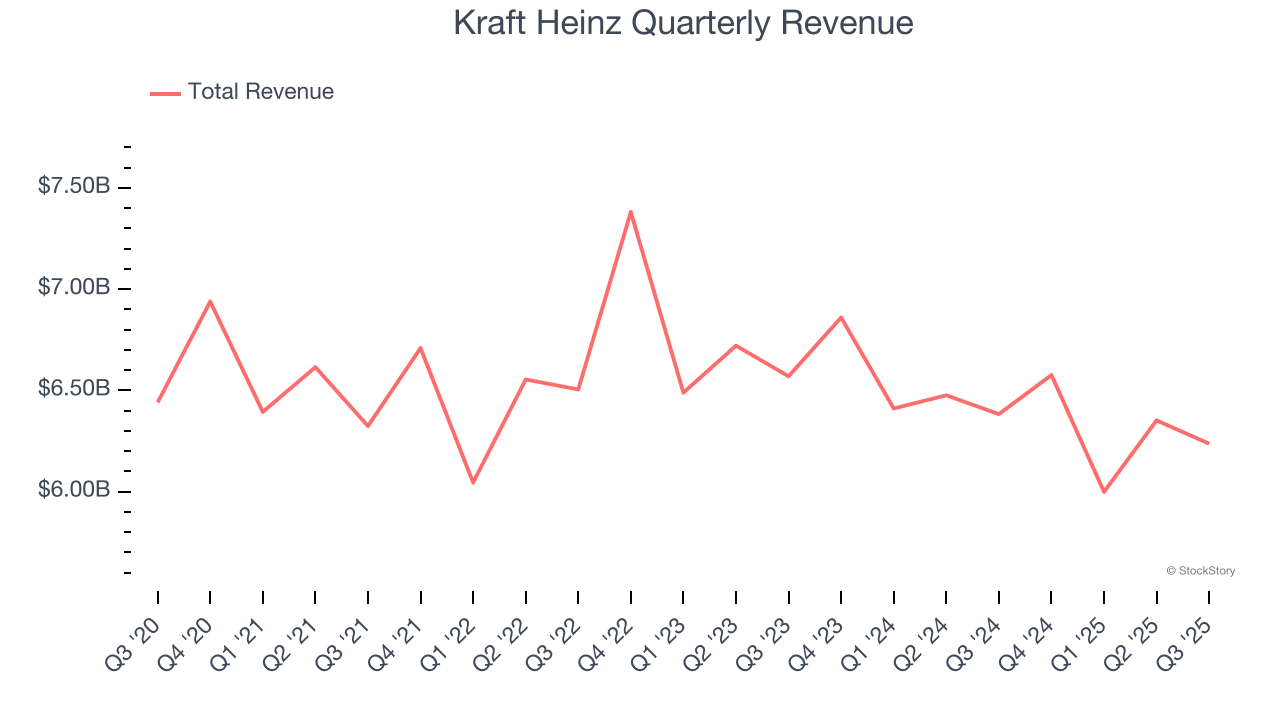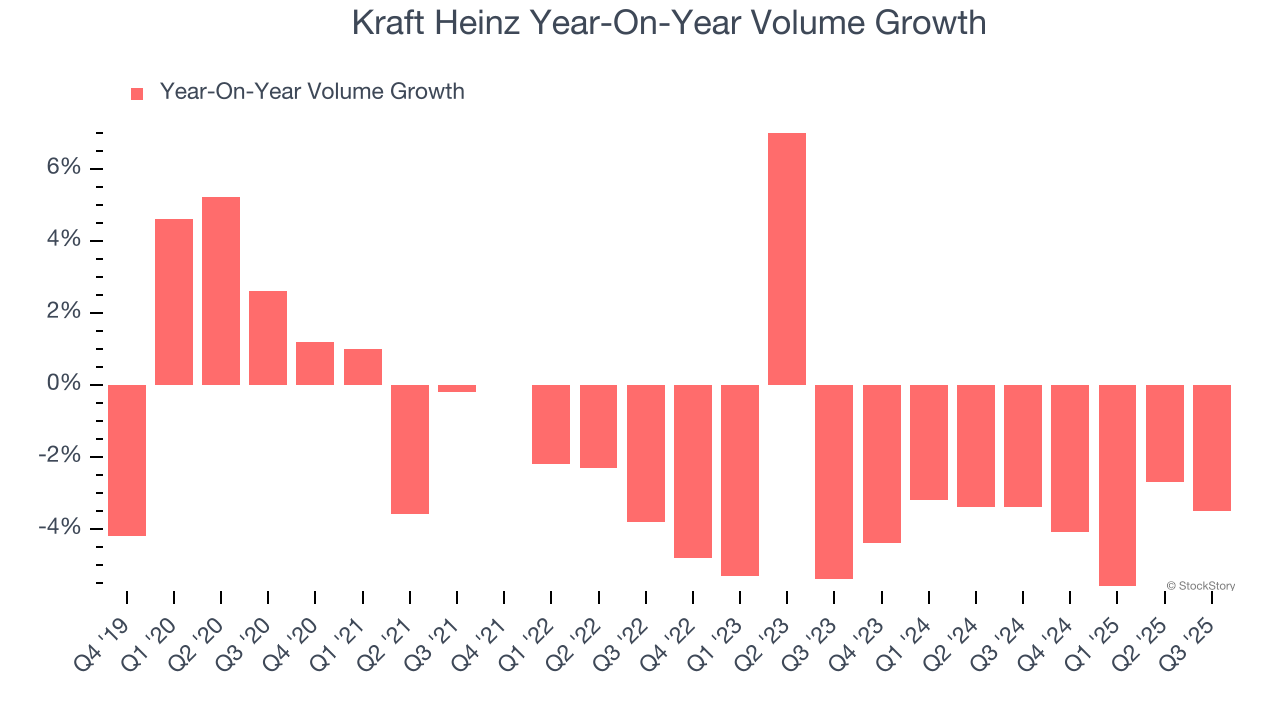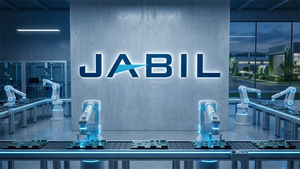
Packaged foods company Kraft Heinz (NASDAQ: KHC) met Wall Streets revenue expectations in Q3 CY2025, but sales fell by 2.3% year on year to $6.24 billion. Its non-GAAP profit of $0.61 per share was 5.5% above analysts’ consensus estimates.
Is now the time to buy Kraft Heinz? Find out by accessing our full research report, it’s free for active Edge members.
Kraft Heinz (KHC) Q3 CY2025 Highlights:
- Revenue: $6.24 billion vs analyst estimates of $6.26 billion (2.3% year-on-year decline, in line)
- Adjusted EPS: $0.61 vs analyst estimates of $0.58 (5.5% beat)
- Adjusted EBITDA: $1.34 billion vs analyst estimates of $1.37 billion (21.5% margin, 2.5% miss)
- Management lowered its full-year Adjusted EPS guidance to $2.54 at the midpoint, a 2.1% decrease
- Operating Margin: 16.4%, up from -1.6% in the same quarter last year
- Free Cash Flow Margin: 15.8%, up from 13.3% in the same quarter last year
- Organic Revenue fell 2.5% year on year vs analyst estimates of 2.2% declines (29.3 basis point miss)
- Sales Volumes fell 3.5% year on year, in line with the same quarter last year
- Market Capitalization: $30.21 billion
Company Overview
The result of a 2015 mega-merger between Kraft and Heinz, Kraft Heinz (NASDAQ: KHC) is a packaged foods giant whose products span coffee to cheese to packaged meat.
Revenue Growth
A company’s long-term sales performance is one signal of its overall quality. Any business can have short-term success, but a top-tier one grows for years.
With $25.16 billion in revenue over the past 12 months, Kraft Heinz is one of the most widely recognized consumer staples companies. Its influence over consumers gives it negotiating leverage with distributors, enabling it to pick and choose where it sells its products (a luxury many don’t have). However, its scale is a double-edged sword because there are only so many big store chains to sell into, making it harder to find incremental growth. To expand meaningfully, Kraft Heinz likely needs to tweak its prices, innovate with new products, or enter new markets.
As you can see below, Kraft Heinz struggled to increase demand as its $25.16 billion of sales for the trailing 12 months was close to its revenue three years ago. This is mainly because consumers bought less of its products - we’ll explore what this means in the "Volume Growth" section.

This quarter, Kraft Heinz reported a rather uninspiring 2.3% year-on-year revenue decline to $6.24 billion of revenue, in line with Wall Street’s estimates.
Looking ahead, sell-side analysts expect revenue to remain flat over the next 12 months. Although this projection suggests its newer products will spur better top-line performance, it is still below the sector average.
Software is eating the world and there is virtually no industry left that has been untouched by it. That drives increasing demand for tools helping software developers do their jobs, whether it be monitoring critical cloud infrastructure, integrating audio and video functionality, or ensuring smooth content streaming. Click here to access a free report on our 3 favorite stocks to play this generational megatrend.
Volume Growth
Revenue growth can be broken down into changes in price and volume (the number of units sold). While both are important, volume is the lifeblood of a successful staples business as there’s a ceiling to what consumers will pay for everyday goods; they can always trade down to non-branded products if the branded versions are too expensive.
To analyze whether Kraft Heinz generated its growth (or lack thereof) from changes in price or volume, we can compare its volume growth to its organic revenue growth, which excludes non-fundamental impacts on company financials like mergers and currency fluctuations.
Over the last two years, Kraft Heinz’s average quarterly volumes have shrunk by 3.8%. This isn’t ideal for a consumer staples company, where demand is typically stable. In the context of its 2.3% average organic sales declines, we can see that most of the company’s losses have come from fewer customers purchasing its products.

In Kraft Heinz’s Q3 2025, sales volumes dropped 3.5% year on year. This result represents a further deceleration from its historical levels, showing the business is struggling to move its products.
Key Takeaways from Kraft Heinz’s Q3 Results
It was good to see Kraft Heinz beat analysts’ EPS expectations this quarter. On the other hand, its gross margin missed and its EBITDA fell short of Wall Street’s estimates. Overall, this was a weaker quarter. The stock traded down 1.7% to $25.10 immediately following the results.
Kraft Heinz’s earnings report left more to be desired. Let’s look forward to see if this quarter has created an opportunity to buy the stock. The latest quarter does matter, but not nearly as much as longer-term fundamentals and valuation, when deciding if the stock is a buy. We cover that in our actionable full research report which you can read here, it’s free for active Edge members.





